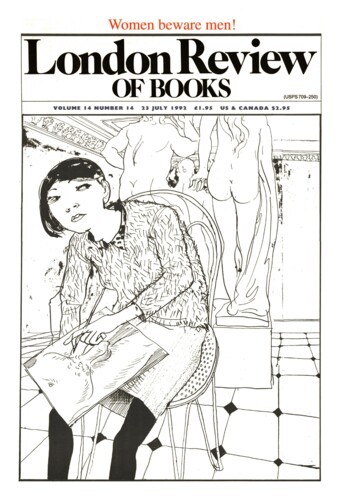Sydney’s Inferno
Jonathan Coe, 24 September 1992
Mess is one of the distinguishing features of Janette Turner Hospital’s writing, but also one of its abiding themes: and part of the reader’s difficulty has always been to decide how much of the mess is intention, and how much miscalculation. The characters in Borderline, her 1985 novel which has many formal similarities with The Last Magician (including an obsession with Dante), are all engaged in transgressing boundaries, whether willingly or not, and the title story of her collection Isobars makes explicit its preoccupation with ‘ideas of order’ imposed upon a messy and shifting reality Lines drawn on a map, she wrote in that story, are ‘talismanic’ and represent ‘the magical thinking of quantitative and rational people’. Her latest novel gives this notion an urgent political twist, by supposing that the ‘ideas of order’ entertained by our governing classes are equally talismanic, and that their regulating power is in fact just as illusory as the power of isobars to make sense of ‘the sloshing flood of time and space’. From the perspective of a smart garden party overlooking Sydney harbour, the line separating order (of which Hospital disapproves, because it’s authoritarian) from chaos (of which she approves, because it’s human) is called sharply into question: ‘Where else,’ her narrator asks, ‘is the membrane between man icured lawn and quarry so wafer thin?’ The ‘quarry’ referred to here is a nightmarish warren into which Sydney’s underclass has been driven: Hospital likes to describe it in terms of Dante’s hellish circles, its outer regions consisting of seedy pubs and bars, its innermost recesses taking the form of hideaways beneath railway tunnels and tube lines. Somewhere in side this labyrinth there is a woman called Cat, and the search to find her keeps the plot’s engine ticking over, although the narrator is certainly in no hurry to let us know why it should be so important, Eventually we learn of a childhood trauma. A quartet of friends indulge in a dangerous game which goes tragically wrong. When the blame is laid, unjustly, on Cat, she is sent away to reform school and from that day onward can never be persuaded to speak. One or the participants and chief witnesses to the injustice, a young prig called Robinson Gray, keeps quiet about his part in it and grows up to be a distinguished judge even while the secret continues to burn away inside him. The other two children, one called (confusingly) Catherine and the other a Chinese Australian by the name of Charlie Chang, spend the rest of then horrified lives trying to make contact with Cat, tracing her fleeting appearances through strip joints, prisons and police files in Sydney and Brisbane.





